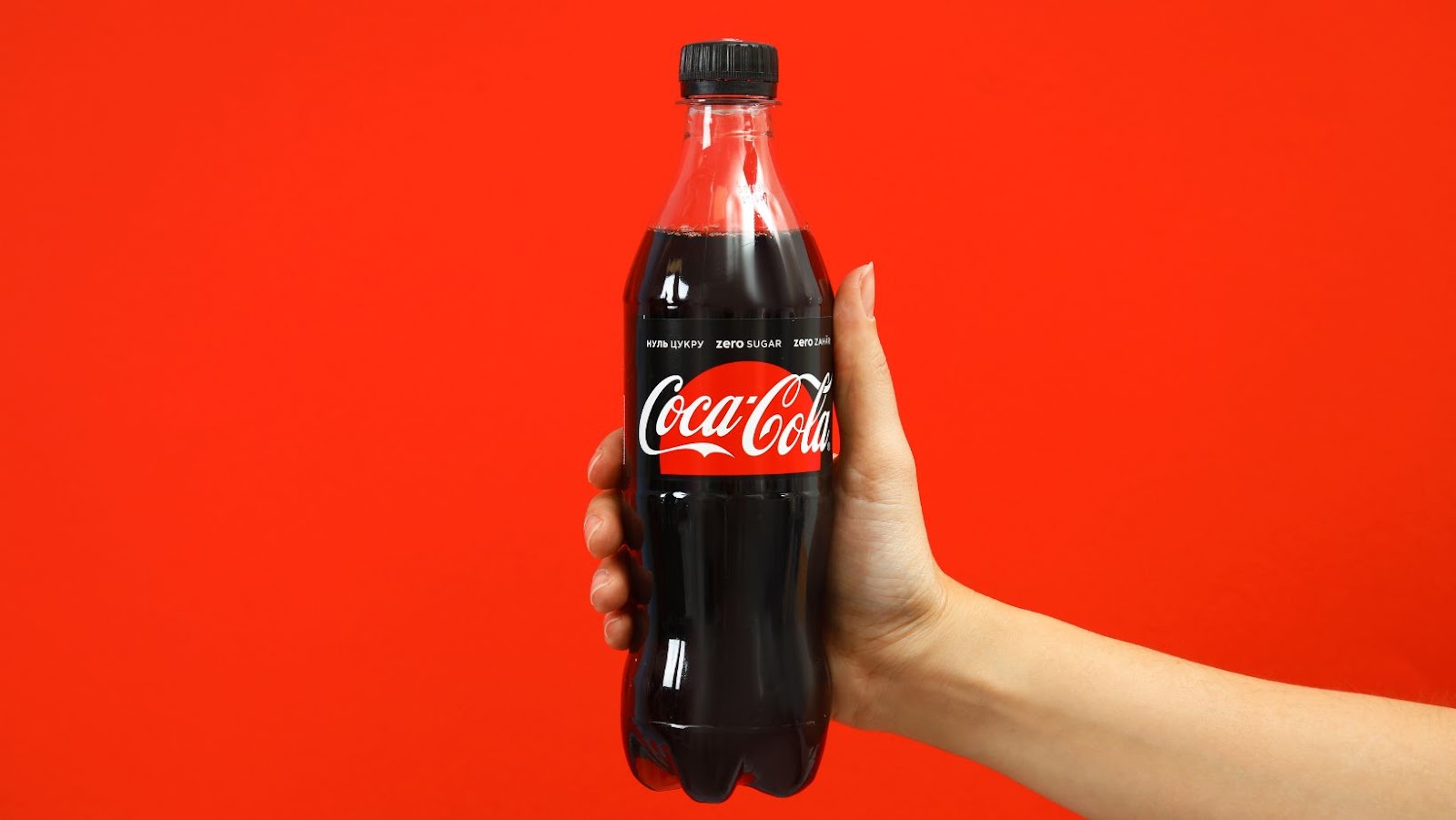Coca-Cola reported strong third quarter results, beating analyst expectations and raising guidance for the future. The company reported revenue of $10.7 billion, a 5% increase from the same period last year and higher than analysts’ predictions of $10.39 billion.
The Q3 earnings report was fueled by strong performance in North America and Europe, with global brand Coke, Dasani and Minute Maid posting strong gains in revenue.
Coca-Cola beats analysts’ expectations for Q3 revenue, raises guidance
In its third quarter earnings report, Coca-Cola beat Wall Street expectations and raised its guidance for the future. The company reported a 9% increase in revenue compared to the same quarter a year ago and adjusted earnings per share of $0.45, five cents higher than analysts’ projected results.
Coca-Cola attributed the success to global volume growth, driven by carbonated soft drink sales (CSDs). The CSD category continued outperforming with 7% organic revenue growth in Q3, while non-carbonated beverages (NCBs) such as juices and teas grew 3%. Strong performance from sparkling flavours like Coca-Cola Zero Sugar compared to other categories propelled the results. In addition, the company noted that new product launches including Aha flavoured water and Topo Chico helped drive innovation across its portfolio.
The company also reported strong metrics from its top four largest markets: North America, Latin America, Asia Pacific, and Europe/Middle East/Africa. North American organic revenues were down 1% for the quarter but profitability rose by about 2%, driven by net operating margin expansion due to successful cost management initiatives. The Latin America region recorded their strongest quarterly organic revenue gain this year of 5%, driven by solid performance in Mexico & Brazil; Mexico saw a 10% gain in organic revenues over the same period last year while Brazil grew 6%. However, organic revenue growth in Asia Pacific coming off an impressive prior year high of 12% decreased 1%;. In comparison, Europe/Middle East/Africa experienced 6% organic revenue growth due mostly to favourable trends in Russia & Turkey despite economic challenges in these regions.
Looking ahead into Q4 and 2020 full year outlooks, Coca-Cola maintained its prior guidance and raised total currency neutral comparable currency operating income guidance for 2019 to 8 – 10%.
Analysts’ expectations for Coca-Cola’s Q3
Coca-Cola reported strong Q3 results, with revenue of $11.8 billion, beating analyst expectations of $11.6 billion. The company’s shares have gained 9% since the earnings report was released on October 15th and its stock price has now reached a new all-time high.
Analysts had originally expected the company to post earnings between $0.47 and $0.58 per share for the quarter. Still, Coca-Cola surprised them by posting earnings of $0.69 per share, well above the estimates. Additionally, profits grew faster than expected, rising 8% yearly to reach $2 billion in Q3 – a record for the beverage giant.
Coca-Cola attributed its success to strong sales of new vending machines that sold both soda and snacks, as well as sales abroad which increased 3% in Europe and 4% in China and India during this period. The company also announced that it would be raising its full year guidance due to its performance in Q3.
Financial Results
Coca-Cola reported strong financial results for the third quarter, beating analyst expectations for both revenue and profit. The company reported an impressive 10.7% year-over-year revenue increase and a 14.4% increase in net income. Additionally, the company raised their full-year guidance for both revenue and profit.
Let’s take a closer look at the company’s strong financial performance.
Revenue
In the third quarter of 2020, Coca-Cola reported total revenues of $9.47 billion, up 0.7% year-over-year from $9.40 billion reported in the same quarter last year. Revenue exceeded analysts’ expectations of $9.27 billion and beat the company’s initial guidance by over 4%.
Net revenue from sparkling soft drinks reached $3.86 billion in the quarter, showing a 3% growth compared to last year’s third quarter, driven by strong performance of Coca-Cola zero sugar and Fanta in North America and Europe, Middle East & Africa (EMEA). In particular, revenue from sparkling soft drinks outside North America grew 8%, with double-digit growth seen in Latin America and EMEA regions that more than made up for mid-digit declines seen in China due to tightened COVID restrictions.
Revenue from bottled water increased 6% while revenue from sports drinks witnessed 7% decrease due to delayed return to play activities during the period as well as lower concentration sales to bottling partners resulting in lower concentrate sales volumes against a tough comparison base due to an early cold season start of 2019 which drove higher seasonal sales versus Q3 2020. Canned coffee products such as Ready-to-Drink Frappuccinos also performed broadly in line with analyst consensus numbers with more than 15% increase in global net sales.
Overall, Coca-Cola reported strong financial results for third quarter that was well above even its initial guidance despite pressure created by pandemic restrictions particularly outside North America region as well as unfavourable currency headwinds when denominated into USD resulting in 4% point impact on its revenues compared to same period prior year goingsupstatsingtheeffectsofCOVIDonthecompanyssalesandprofits.
Coca-Cola announced its earnings results for Q3 2019, beating analysts’ expectations for both revenue and earnings per share (EPS). Revenue for the quarter was $8.99 billion, up 5 percent from a year ago. In addition, earnings per share increased by 8 percent to $0.86, above analyst estimates of $0.82 per share.

Overall volume sales for the beverage giant were flat for the quarter as an increase in sparkling beverages volume was offset by a decline in still beverage volume. However, Coca-Cola’s pricing initiatives were successful, resulting in higher revenues despite flat volume sales numbers. As a result, gross margin expanded 100 basis points year-over-year and operating margin increased 140 basis points to 38.7 percent year-on-year supported by the strong overall performance of concentrate operations and strong cost improvements across all other reporting segments.
The impressive performance helped push Coca-Cola stock to reach new premarket trading high on October 22nd 2019 after the company reported its Q3 results. Coca-Cola also raised its full year guidance as it expects 2019 EPS at or above $2 per share led by solid top line momentum and ongoing cost optimization initiatives that are expected to contribute to positive bottom line results for 2019 overall performance.
Operating margins
Coca-Cola reported a strong third quarter report, with revenue surpassing analyst expectations. In addition, operating margins rose to 21.1%, 270 basis points higher than the prior year and 340 basis points higher than the second quarter figure.
Cost of goods sold declined by 160 basis points year-over-year due to increased productivity across manufacturing and distribution systems. Operating expenses were also lower compared to the same period in 2018, primarily driven by cost savings initiatives designed to offset increased promotional spending associated with the strong summer consumption cycle.
Impact of COVID-19
Despite the effects of the ongoing COVID-19 pandemic, Coca-Cola was able to report strong Q3 results, beating analyst expectations. In addition, even amid the pandemic, Coca-Cola beat analysts’ expectations for Q3 revenue, and raised its guidance for the year.
In this article, we’ll discuss the impact of COVID-19 on Coca-Cola’s performance in Q3, and how the company is managing the challenges posed by the pandemic.
Changes in consumer demand
As the world grapples with the coronavirus pandemic’s effects, consumer demand for products and services has changed significantly. This is especially true for beverage companies, whose products have experienced a shift as consumers stay home and look for convenient food and drinks.
Coca-Cola reported that its global unit case volumes had declined by 4% in the third quarter, primarily because of lower demand in foodservice outlets. However, the company was able to offset this loss with strong sales in at-home consumption channels—driven by structural changes in consumer behaviour due to lockdown measures—and e-commerce platforms. As a result, Coca-Cola reported better-than-expected revenue growth of more than 5% year-over-year, above analyst expectations of just 0.3%.
Coca Cola’s overall performance shows how consumer demand has shifted due to COVID-19: establishment closures resulted in lower foodservice consumption and consumer preferences shifting towards at home consumption channels drove revenue growth despite declining overall volumes. The company’s ability to adjust quickly to these dramatic changes likely contributed to their success for this financial quarter.
Impact on production and distribution
Coca-Cola reported revenue and earnings that exceeded analyst expectations in their third quarter report, despite the major challenges posed by the ongoing COVID-19 pandemic. This performance was largely driven by strong demand for at-home consumption of carbonated and noncarbonated beverages and a focus on cost management.
In terms of production and distribution, while Coca-Cola increased in-store sales due to these at-home consumption trends, they also experienced some difficulty executing new production and distribution strategies. Coca-Cola had to adapt quickly to limit the disruption to their supply chain operations amid global lockdowns, challenging restaurant industry conditions and changing consumer demand patterns. They implemented several initiatives for healthier procurement, sustainable packaging solutions and responsible supplier relationships during this period, which helped them meet or exceed existing market demands and maintain operational efficiency.

On the other hand, demand from out of home channels such as delivery apps decreased due to restrictions or closures of restaurants or other venues with sales of Coca-Cola products. For example, many vending machines apps have been shut down due to local lockdown orders, further decreasing vending machine sales for companies such as Coca-Cola. For full recovery in this category, a combination of innovative solutions such as contactless vending machines and loosening restrictions must occur if we expect better results next quarter.
Guidance
Coca-Cola reported strong Q3 results, beating analyst expectations and raising its guidance for the year. The beverage giant reported revenue of $9.3 billion, up 9% year-over-year, driven by strong growth in sparkling soft drinks and higher pricing. The company also raised its guidance for the year, citing solid product demand.
This article will focus on how Coca-Cola’s guidance was an important factor in their strong Q3 results.
Increase in full-year guidance
Coca-Cola reported robust third quarter results, beating analysts’ estimates for sales and earnings. The company also raised its full-year guidance, citing continued positive trends in consumer demand. Coca-Cola also returned about $4 billion to shareholders through a mix of dividends and stock repurchases.
In terms of full-year guidance, the company increased its annual dividend by 15%—the 59th consecutive year for which Coca-Cola increased its dividend payout. The adjusted earnings guidance was revised to around $2.02 per share from $1.99 per share. The revenue expectation was also hiked from 2–4% growth in organic revenues to 4–5% by year end.
Coca-Cola’s Chief Executive Officer James Quincey was pleased with the strong performance, noting, “We delivered strong operating performance in Q3 fueled by successful innovation initiatives across our sparkling and stills portfolio.” However, Quincey believes there is room for further growth as the company continues to invest in new products and services that cater to changing consumer needs and tastes around the globe.
Factors contributing to the increase
Coca-Cola reported strong revenue and earnings growth in the third quarter of 2020, beating analysts’ expectations and raising its guidance. The company is one of the most recognizable global brands, and its popularity drove higher-than-expected sales in markets around the world.
This can be attributed to several factors, such as increased consumer spending on nonalcoholic beverages due to longer periods of sheltering in place during the COVID-19 pandemic; higher prices for Coca-Cola’s products; and structural changes such as increasing plant automation, which improved efficiency and reduced costs. Additionally, Coca-Cola has seen success by expanding their offerings to include products designed for health-conscious consumers by launching a new line of waters and cheaper alternatives such as canned sodas made with real sugar.
In addition, Coca-Cola has increased their focus on ecommerce sales, which has helped boost overall revenues for Q3.
Analyst Reaction
After Coca-Cola reported strong third quarter results and raised its guidance, analysts quickly reacted to the news. The company’s strong performance surprised analysts and beat expectations, causing shares in the stock to jump.
This article will discuss analysts’ reactions to Coca-Cola’s Q3 results and their outlook for the stock moving forward.
Positive outlook for Coca-Cola’s future
Coca-Cola’s strong Q3 results and raised guidance for the rest of the year have been met with widespread praise from analysts and investors alike. The beverage company’s higher-than-expected revenue and increased profitability show that Coke is continuing to progress steadily. Furthermore, Coca-Cola executives have stated that they expect to see further growth shortly, giving investors confidence in the company’s outlook.
Analysts are particularly pleased with Coca-Cola’s strong performance in key markets like North America and Europe. Reported organic revenue growth in each market was up five percent year over year, while revenue in Asia was up four percent. This positive picture has caused some analysts to increase their target prices for Coca-Cola stock going forward. In contrast, others have simply reiterated their enthusiasm for it being a core holding going into 2021.
Overall, Coca-Cola’s strong performance against analyst expectations has resulted in a positive outlook for the beverage giant and its stock going forward. As a result, investors are likely to see consistent returns on their holdings as long as these trends continue into 2021.
Recommendations for investors
The Coca-Cola Company reported stronger than expected revenue and earnings for the third quarter of 2020, driven by strong retail sales of its core beverage products and higher pricing. Coca-Cola also said it has raised its full-year 2020 earnings guidance.
As a result, analyst firms have been providing independent research and insight into the performance of the company’s stock and related opportunities for investors. As a result, many analysts believe that Coca-Cola’s latest results are impressive despite the challenging macroeconomic environment and remain optimistic about their outlook for the company in 2021.

Many analysts covering Coca-Cola stock have issued strong “buy” ratings, indicating that investors should buy shares at current levels to benefit from potential upside as consumption patterns normalise following economies reopening post COVID-19. Other analysts believe that further cost cutting initiatives could boost Coca-Cola’s profitability in 2021 while product diversification in adjacent markets could provide added growth upsides to shareholders.
In conclusion, investors should consider current analysts’ recommendations when evaluating whether or not to invest in The Coca Cola Company’s stock and use this insight alongside their own assessment of economic factors and industry trends when making investment decisions regarding their portfolio holdings.











